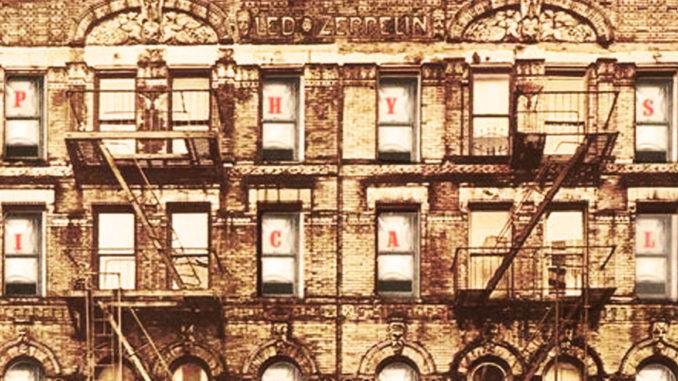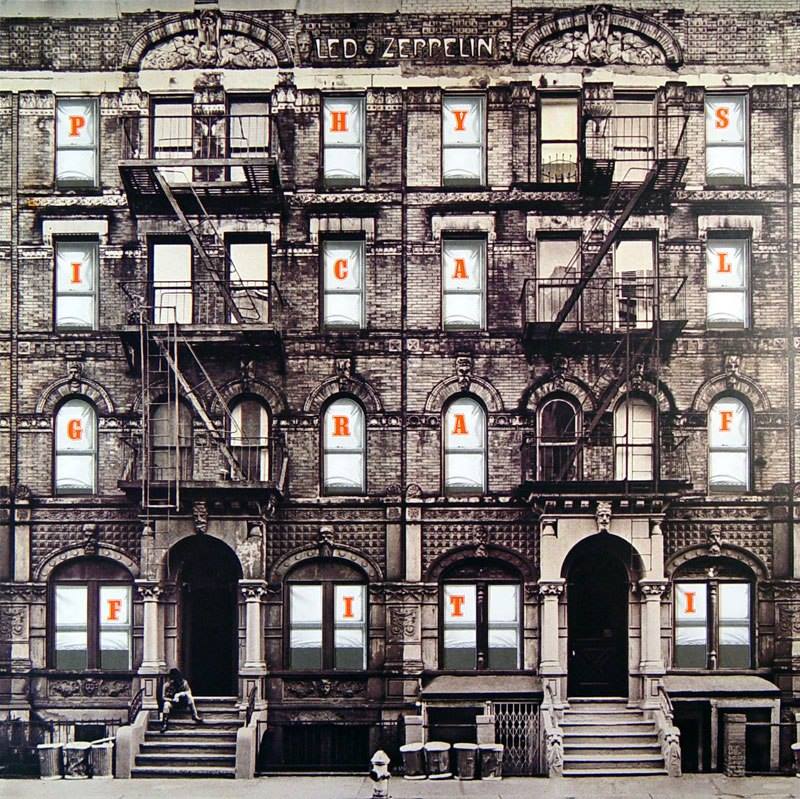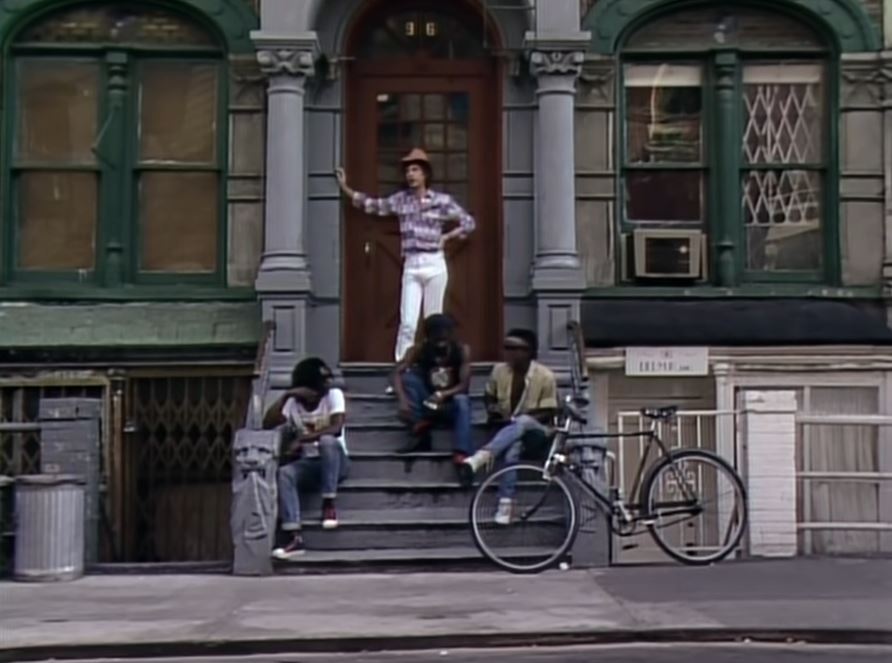
Physical Graffiti was Led Zeppelin’s sixth studio album, released on 24 February 1975. It was their only double studio album.
At this point, Zeppelin were the masters of the creative album sleeve. People had started anticipating their cover art and were looking forward to what they would do next. The new album cover did not disappoint. In many ways Physical Graffiti combined the best of all that they had done before.
The most complex concept accompanied their album Led Zeppelin III (1970). That sleeve had small holes cut out of it, and a wheel with different images inside of it. When turned, the sleeve would reveal different objects in the hole at any one time.
Other sleeves focused more on immediately striking features, such as Houses of the Holy (1973) and hidden, symbolic meanings, such as their fourth, ‘untitled’ album (1971).
RELATED ARTICLE: Classic Album Covers: Led Zeppelin’s fourth album
For this double album the group came up with an outer-sleeve photo of buildings on St. Mark’s Place in New York City – specifically No. 96 and 98. The buildings were tweaked and combined as needed to make up the façade on the album sleeve.

Peter Corriston photographed and designed the image on the cover. He was looking for a building that was symmetrical with interesting details. They could not be obstructed by other objects, and needed to fit a square album cover. In a New York Times interview from 2008, he mentions walking around the city for a few weeks looking for the right building before they found it.
Corriston also came up with the main gimmick of the album sleeve along with Mike Doud. They would cut out each window of each building. The inner sleeves that contained the records had a number of different images printed on them. When placed inside the outer sleeves, they would appear in the building’s windows.

Some interesting images can be found there, for sure – including shots of the band dressed in drag. Photographs of Lee Harvey Oswald, Marcel Duchamp and Pope Leo XIII are also featured, along with several American icons and a range of Hollywood ephemera.
It had almost been two years since Houses of the Holy was released. Jimmy Page had baulked at III’s gimmicky sleeve at the time. Now he was more open to the idea of attracting attention any way he could with the sleeve.
Fans of The Rolling Stones may also recognise these buildings. They are the ones Mick Jagger is seen sitting in front in the Waiting On A Friend music video.


Facebook Comments